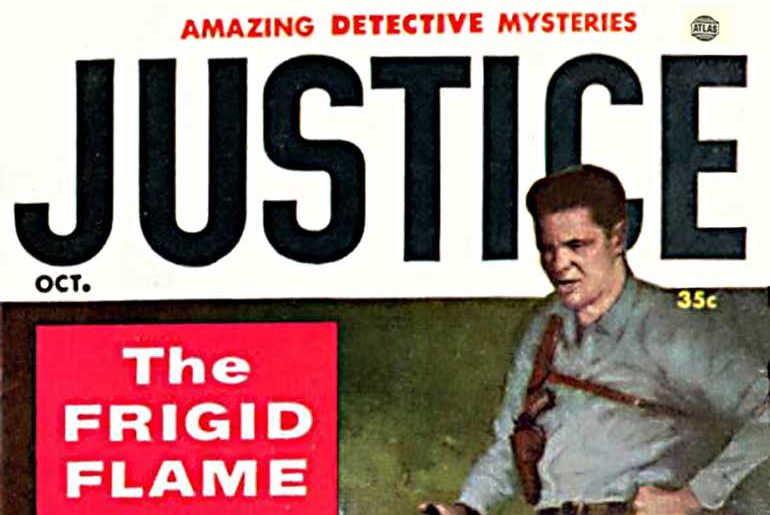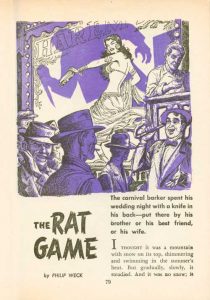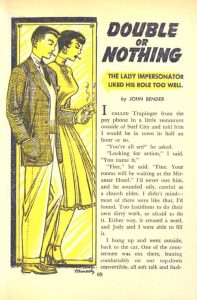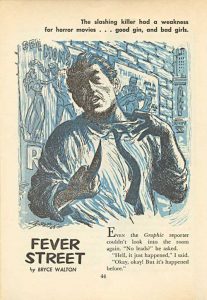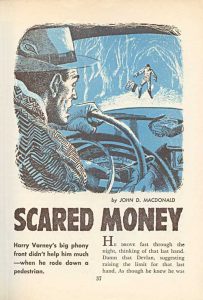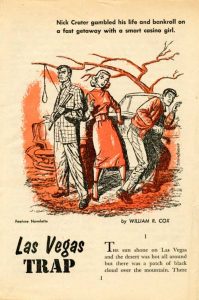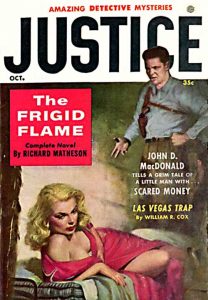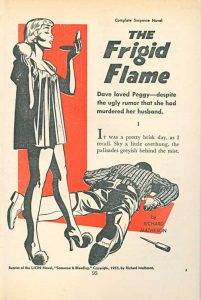 Publisher Martin Goodman started both Non-Pareil (Justice) and the Lion paperback book line, so it’s no surprise the novels featured in the digest magazine first appeared as Lion paperbacks a few years earlier. The seventh, and final story in Justice Amazing Detective Mysteries #3, October 1955 is Richard Matheson’s “The Frigid Flame,” which was first published as Someone is Bleeding by Lion in 1953.
Publisher Martin Goodman started both Non-Pareil (Justice) and the Lion paperback book line, so it’s no surprise the novels featured in the digest magazine first appeared as Lion paperbacks a few years earlier. The seventh, and final story in Justice Amazing Detective Mysteries #3, October 1955 is Richard Matheson’s “The Frigid Flame,” which was first published as Someone is Bleeding by Lion in 1953.
Matheson is best remembered for his science fiction and horror novels, but he wrote suspense and thrillers too, and this one could be labeled as such—or noir. Young Davie Newton falls hard for the beautiful, but unpredictable Peggy Lister, a young woman with a past. The story is ripe with action and plot twists, and Matheson’s excellent writing does a good job selling the sometimes melodramatic events and dialogue. The mystery here is whether the story is true noir, or a crime drama that wraps things up with a happy ending—and you won’t know for sure until the final page.
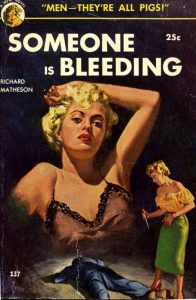 James Reasoner’s Rough Edges and Admiral Ironbombs’ Yellowed and Creased cover reviews of the paperback version of the story.
James Reasoner’s Rough Edges and Admiral Ironbombs’ Yellowed and Creased cover reviews of the paperback version of the story.
“The Frigid Flame” gives this issue of Justice a strong finish, but overall I’d give the previous edition from July 1955, a slight edge.
Peter Enfantino provides synopses for all four issues of Justice in The Digest Enthusiast book five.

